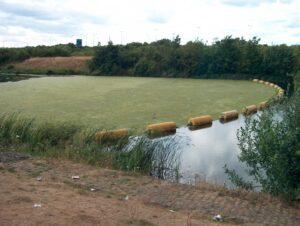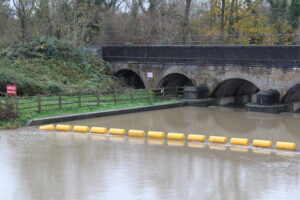History is now repeating itself on the Jubilee River! The EA has forgotten the mistakes of the past and has just made the same mistake again.

When the Jubilee River buoys were first installed they blocked the passage of algae and created an upstream carpet. Most of the buoy strings were then modified by widening the gaps to get over the problem of retained detritus.
The EA has now changed the buoys at Black Potts as shown in the image below. Need I say anymore? Perhaps the phrase ‘silly buoys’ is appropriate?

END

